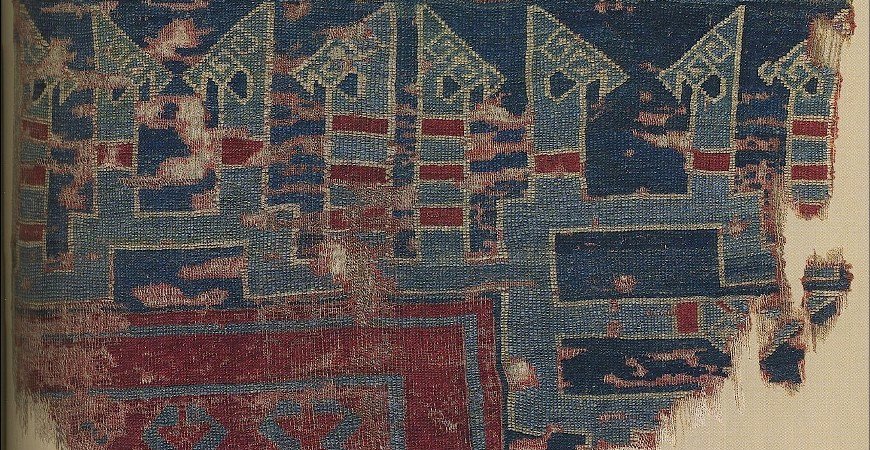Seljuk Carpets Konya Turkey – Chapter 2,
Those in Konya Mevlana Museum were brought from the Beysehir Esrefoglu Mosque in 1930. Seyfeddin Suleyman Bey who founded the Esrefoglu Beylik in 1297 had a mosque built in his name in Beysehir and filled it with carpets. Only pieces of them remain.
The Seljuk carpets in the Stockholm National Museum were taken from Cairo in 1936, and have been established by experts as examples of those which were exported from Anatolia.
The motifs of Seljuk carpets were usually geometrical, among the most common patterns being crossing lines, symmetric hooks, and eight-pointed stars. Some of the carpets are decorated with Cufic writing around the borders. Some of them have stylized floral motifs. They were made with thick, hard thread and Gordes knots. The colors, obtained from vegetable dyes, are attractive and eye-catching. The Seljuk carpets in the Istanbul Museum of Turkish and Islamic Art and in the Konya IVIevlana Museum are famous for the most valuable carpets in the world. On one occasion it was requested that some of these Seljuk carpets be exhibited abroad. To send them required that they are insured, but their value could not be estimated and the idea of putting a symbolic price on them had certain drawbacks. In the end, it was decided not to send them.
The Ottoman art of carpet making followed on from that of the Seljuks, creating a 700-year-old traditional art of carpet weaving in Turkey. After the Seljuks, the Anatolian cities of Gordes, Kula, Ladik, Sivas, Kayseri, and Kirsehir became famous centers of carpet making. For the Ottoman palaces, carpets were woven from silk.
The first knotted carpet was woven in Anatolia during the Seljuk period, and the art developed here. These masterpieces made by Turkish craftsmen are displayed in museums all over the World.

Leave a Reply